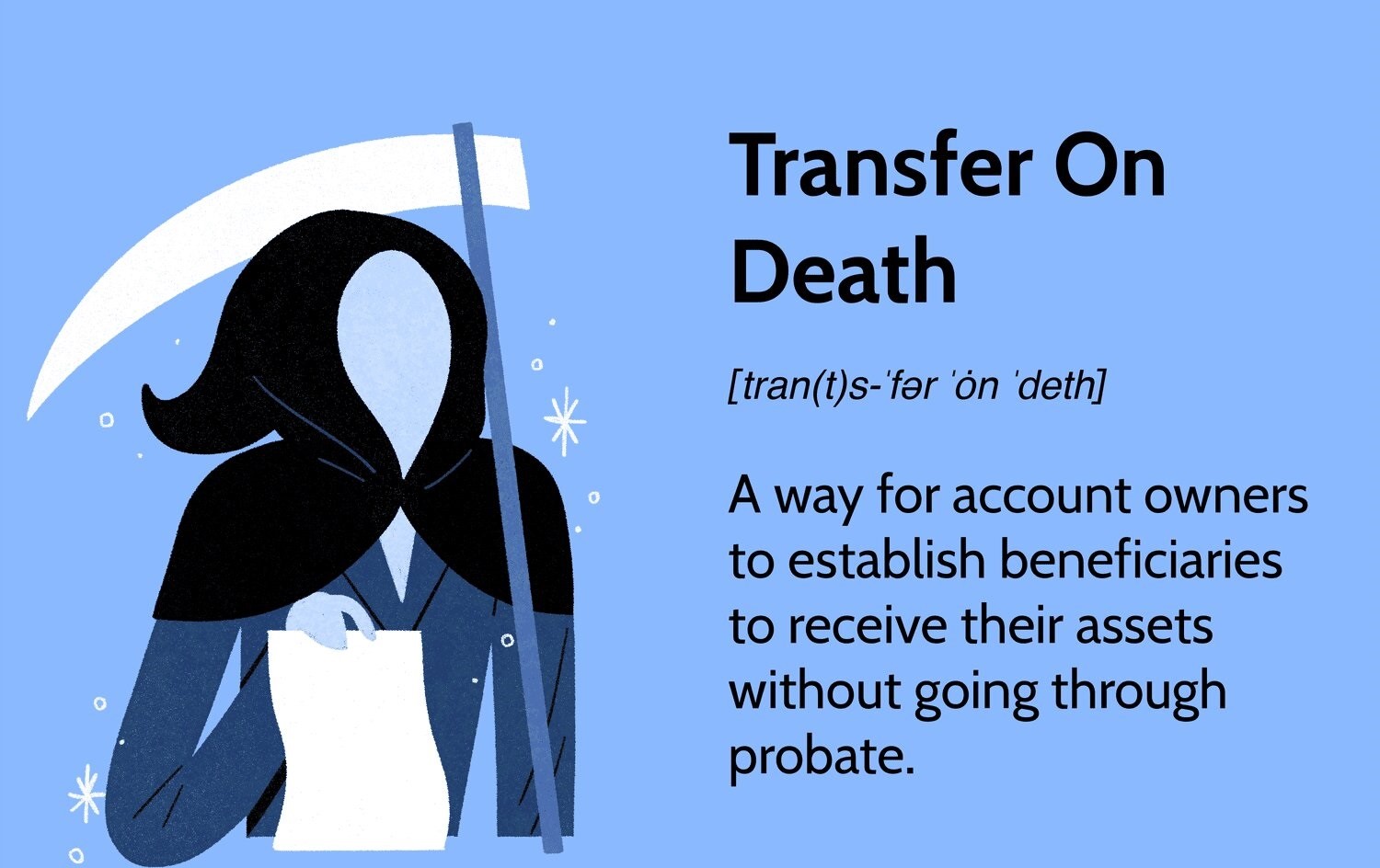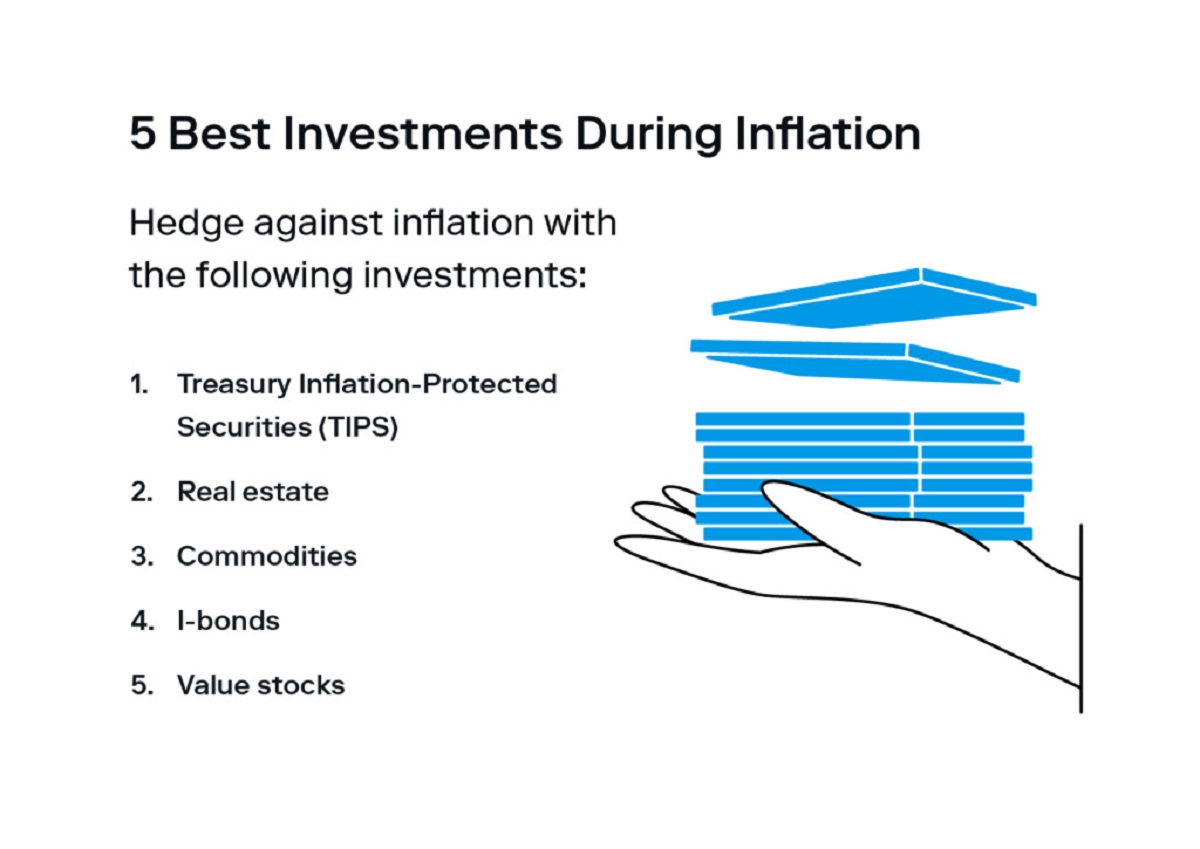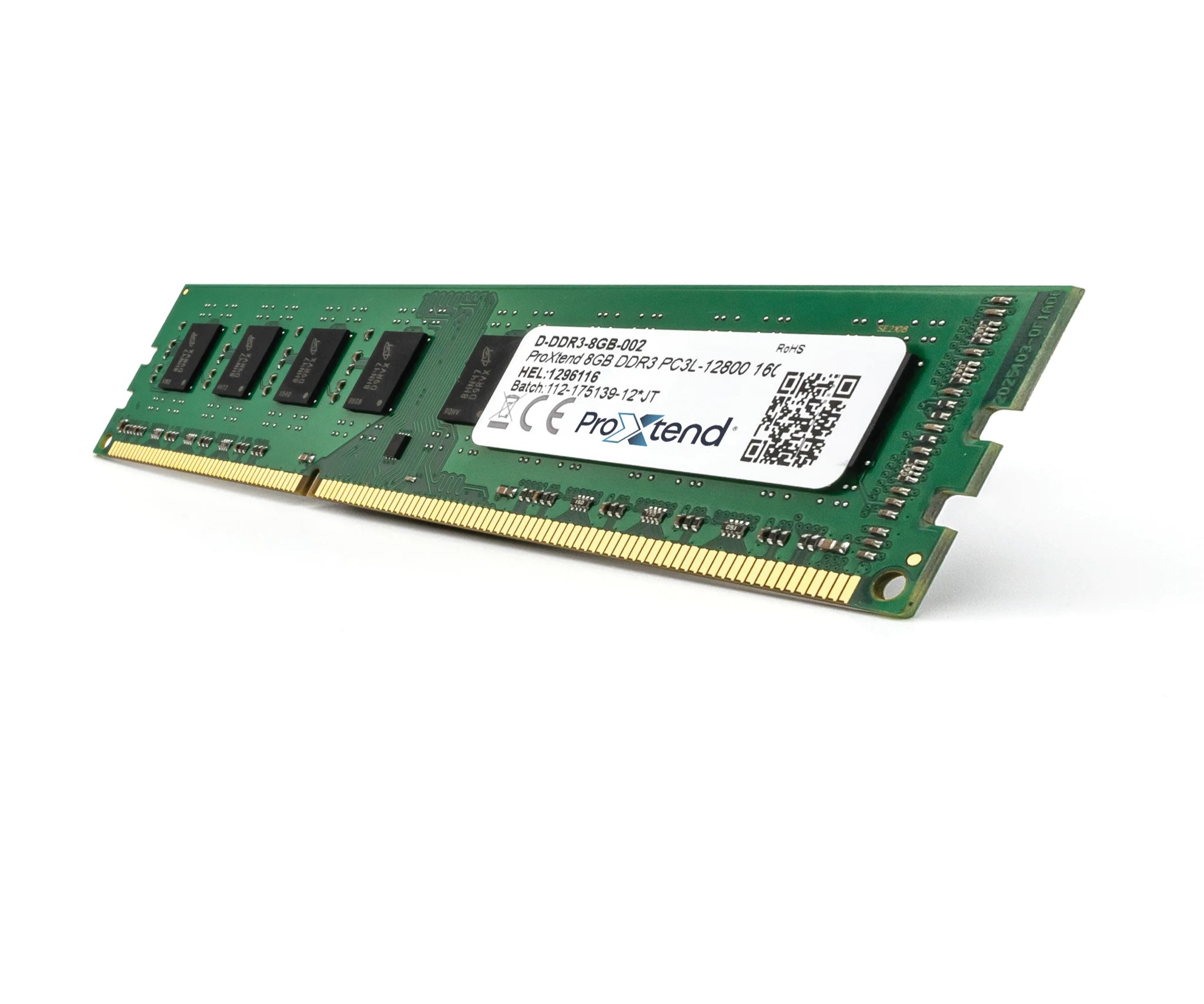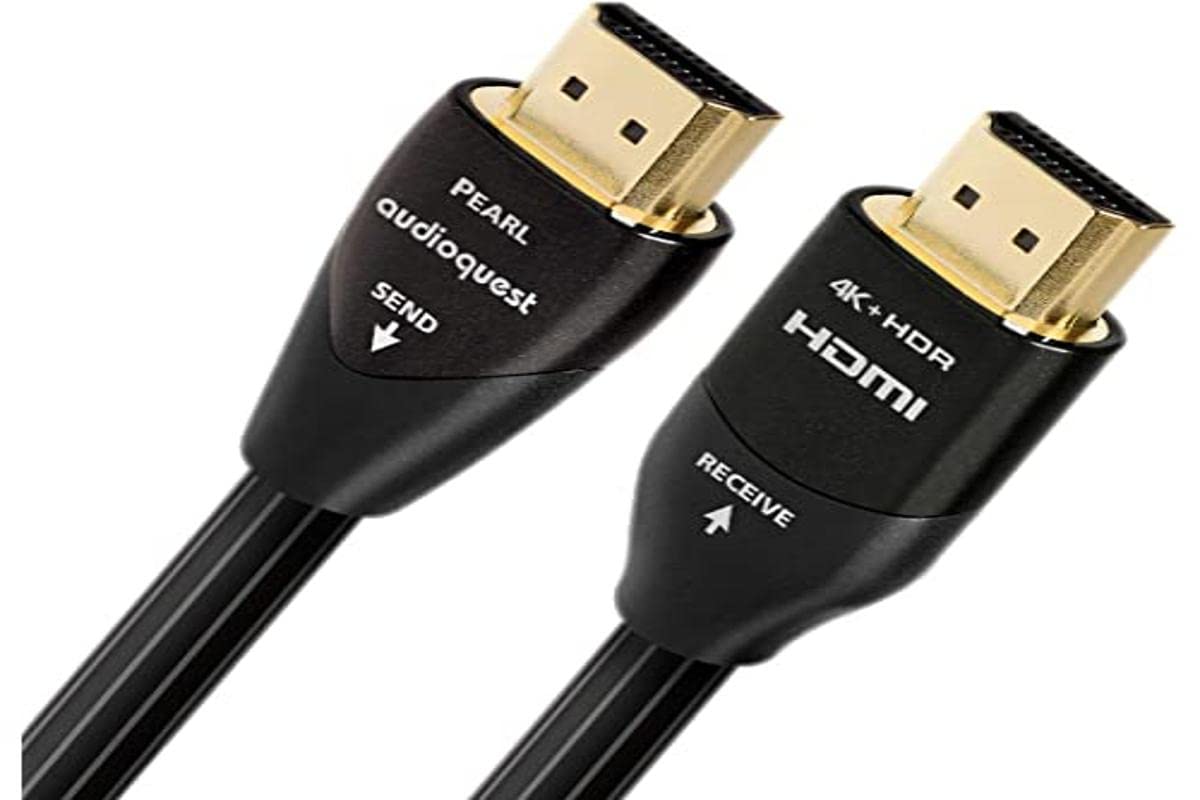Introduction
When it comes to making investments, it’s important to have a clear understanding of various terms and strategies that can help you maximize your returns. One such term that you may come across is “TOD,” which stands for Transfer on Death. TOD is a financial designation that allows you to name beneficiaries who will inherit your investments upon your death, without going through the probate process. This arrangement offers several advantages, but it’s crucial to comprehend its specifics before incorporating it into your investment plan.
Through this article, we will explore the concept of TOD in investments, its benefits and drawbacks, as well as the steps involved in establishing a TOD account. Additionally, we will address the tax implications of TOD and clarify any misconceptions surrounding this investment strategy. By the end, you will gain a comprehensive understanding of TOD and how it can be utilized to efficiently manage your investments and ensure a smooth transition of assets to your beneficiaries.
What is TOD in Investments?
Transfer on Death (TOD) is a legal arrangement that allows individuals to designate beneficiaries who will automatically receive ownership of their investments upon their death. TOD is commonly used for various types of investments, including stocks, bonds, mutual funds, and brokerage accounts. It provides a seamless transfer of assets without the need for probate, which can be a time-consuming and costly process.
The primary purpose of TOD is to ensure that your investments are efficiently passed on to your chosen beneficiaries. When you establish a TOD arrangement, you retain complete control and ownership of your investments during your lifetime. However, upon your death, the investments are transferred directly to the designated beneficiaries, bypassing probate.
It’s important to note that TOD only becomes effective upon the death of the account owner. Until that time, the account remains under the complete control of the owner, who can buy, sell, or make any changes to the investments as they see fit. This flexibility and control make TOD a valuable tool for estate planning and ensuring the smooth transfer of assets to your loved ones.
TOD can be particularly beneficial for individuals who want to simplify the transfer process and avoid probate. Probate is a court-supervised process that validates a person’s will, settles their debts, and distributes their assets. It can be a lengthy and expensive process that may result in delays and additional costs for heirs. By designating beneficiaries through TOD, the assets can be quickly and efficiently transferred to the chosen beneficiaries outside of the probate process.
In addition to its simplicity and efficiency, TOD offers privacy in asset distribution. Unlike probate, which is a public process, TOD allows the transfer of assets to occur privately and confidentially. This can be particularly important for individuals who prefer to keep their financial matters private or wish to minimize potential disputes among family members.
Advantages of TOD
Transfer on Death (TOD) arrangements offer several advantages that make them an attractive option for individuals looking to efficiently manage their investments and estate planning. Let’s explore some of the key advantages of TOD:
- Probate avoidance: One of the primary advantages of TOD is that it allows you to bypass the probate process. Probate can be a lengthy and costly procedure, often taking several months to years to complete. By utilizing TOD, your designated beneficiaries can receive the investment assets directly without the need for court involvement.
- Quick and efficient asset transfer: Upon your death, the ownership of the TOD assets is transferred directly to your designated beneficiaries. This ensures a smooth and expedient transfer process, allowing your loved ones to access the funds without unnecessary delays.
- Privacy: Unlike probate, which is a public process, TOD arrangements offer privacy in asset distribution. The transfer of assets occurs outside of the court system and remains confidential. This can be particularly advantageous for individuals who value their financial privacy or prefer to keep their estate matters discreet.
- Potential tax benefits: TOD arrangements can offer potential tax benefits, depending on the jurisdiction and the type of investment. It’s important to consult with a tax professional or financial advisor to fully understand the tax implications regarding TOD in your specific situation.
- Flexibility and control: While you are alive, TOD provides you with complete control and ownership of your investments. You can make changes to your investments, sell them, or even revoke the TOD designation if circumstances change. This flexibility allows you to adapt your investment strategy according to your needs and goals.
Overall, TOD arrangements provide a convenient and efficient way to transfer your investment assets to your loved ones, while avoiding the complexities and costs associated with probate. However, it’s essential to assess your specific financial situation and consult with a legal or financial professional to determine if TOD is the right option for you.
Disadvantages of TOD
While Transfer on Death (TOD) arrangements offer numerous benefits, it’s important to consider the potential disadvantages before implementing this investment strategy. Understanding these drawbacks will help you make an informed decision regarding the suitability of TOD for your specific circumstances. Let’s explore some of the key disadvantages:
- Limited control after your passing: Once you pass away, the assets subject to TOD immediately transfer to the designated beneficiaries. This means that you will no longer have control over how those assets are managed or distributed. Depending on your goals, this loss of control can be a disadvantage.
- Challenging beneficiary changes: Altering the beneficiaries designated in a TOD arrangement can be more cumbersome than making similar changes to other types of accounts. You may need to follow specific procedures and provide the necessary documentation to update the beneficiary designations. It’s crucial to stay updated and review your TOD beneficiaries regularly to ensure they align with your current wishes.
- Potential for disputes: In some cases, TOD arrangements can lead to disputes among family members or designated beneficiaries. This can occur if there are disagreements regarding the distribution or management of the assets after your passing. It’s important to communicate clearly with your loved ones and ensure everyone understands your intentions to minimize the potential for disputes.
- Complex asset distribution: TOD arrangements may not be suitable for individuals with complex financial situations or those who have assets in multiple locations. Coordinating the transfer of assets within a TOD arrangement can be challenging, particularly if the assets are held across various financial institutions or in different forms, such as real estate or business interests.
- Limited estate planning opportunities: While TOD is a useful tool for transferring investment assets, it may not address all aspects of your estate planning needs. Depending on your situation, you may require additional estate planning strategies, such as creating a will or establishing a trust, to fully meet your objectives and ensure comprehensive asset distribution.
It’s crucial to carefully evaluate these disadvantages in conjunction with the advantages of TOD to determine if it aligns with your overall financial goals and estate planning objectives. Consulting with a legal or financial professional can provide valuable guidance and help you make an informed decision regarding the implementation of a TOD arrangement.
How to Establish a TOD Account
Establishing a Transfer on Death (TOD) account requires careful planning and attention to detail. While the specific steps may vary depending on your financial institution and jurisdiction, here is a general guide on how to establish a TOD account:
- Research and choose a financial institution: Begin by researching and selecting a financial institution that offers TOD accounts. Consider factors such as reputation, fees, and customer service to ensure you choose a reliable institution that meets your needs.
- Contact the financial institution: Reach out to the chosen financial institution to inquire about their TOD account options and requirements. You can do this by visiting a local branch, calling their customer service line, or exploring their website for information.
- Complete the necessary documentation: The financial institution will provide you with the required forms and documents to establish a TOD account. These documents typically include a TOD registration form and beneficiary designation forms. Fill out the forms accurately and provide all requested information.
- Review and understand the terms: Carefully review the terms and conditions of the TOD account agreement. Understand the rights and obligations associated with the account, including any fees, restrictions, or conditions that may apply.
- Designate beneficiaries: Specify the beneficiaries who will inherit the assets in the TOD account upon your death. Provide their full legal names, contact information, and relationship to you. You may be required to include additional details, such as Social Security numbers or dates of birth.
- Submit the documentation: Once you have completed the necessary forms and designated the beneficiaries, submit the documentation to the financial institution. Follow their instructions regarding submission methods, such as in-person delivery, mail, or online submission.
- Keep copies of the documents: Make copies of all the completed forms and keep them in a safe place. It’s essential to have a record of your TOD designation for reference and to provide to your beneficiaries when necessary.
- Review and update periodically: Regularly review and update your TOD account designation, especially if there are significant changes in your life, such as marriage, divorce, birth, or death of beneficiaries. Ensure that the designated beneficiaries accurately reflect your current intentions.
It’s important to note that the process of establishing a TOD account may differ slightly depending on your jurisdiction’s laws and regulations. Consulting with a legal or financial advisor can provide guidance tailored to your specific situation and ensure compliance with applicable regulations.
Tax Implications of TOD
When considering the implementation of a Transfer on Death (TOD) arrangement, it’s crucial to understand the potential tax implications associated with this investment strategy. While TOD can offer certain tax benefits, it’s essential to consider the specific tax laws and regulations in your jurisdiction. The following are key points to consider regarding the tax implications of TOD:
- Capital gains tax: In most cases, the transfer of investments through a TOD arrangement will trigger a capital gains tax event upon the beneficiary’s sale of the assets. The capital gains tax is calculated based on the difference between the sale price and the cost basis (the original purchase price), subject to any applicable tax exemptions or deductions.
- Step-up in basis: One potential tax advantage of TOD is the step-up in basis. With a step-up in basis, the beneficiary’s cost basis for the inherited assets is adjusted to their fair market value at the time of the original owner’s death. This adjustment can potentially reduce the capital gains tax liability for the beneficiary if they choose to sell the inherited assets.
- Income tax: Generally, TOD accounts do not have significant income tax implications during the account owner’s lifetime. The income generated by the investments within the TOD account is typically attributed to the owner and taxed accordingly on their personal tax return.
- Estate tax considerations: TOD arrangements can help minimize estate tax liability if the total value of your taxable estate is above the estate tax threshold. By transferring the assets directly to the beneficiaries through TOD, those assets may not be subject to estate taxes, potentially reducing the overall tax burden on your estate.
- Gift tax considerations: If you transfer ownership of investments into a TOD account during your lifetime, it may be considered a gift for tax purposes. Depending on the value of the assets and applicable gift tax exemptions, you may need to file a gift tax return or potentially incur gift tax liability.
- State and local taxes: The tax treatment of TOD accounts may also vary at the state and local levels. It’s important to consult with a tax professional or financial advisor who is well-versed in your jurisdiction’s tax laws to ensure compliance and understand the specific tax implications.
Understanding the tax implications of TOD is crucial for effective estate planning and maximizing the benefits of this investment strategy. As tax laws can be complex and subject to change, it’s recommended to consult with a tax professional or financial advisor knowledgeable in estate planning and tax matters to assess the specific tax implications of TOD in your situation.
Difference Between TOD and Joint Ownership
Transfer on Death (TOD) and joint ownership are both methods of asset transfer, but they differ in several key aspects. Understanding the differences between TOD and joint ownership is essential when considering how to structure your investments and estate planning. Let’s explore the main distinctions between these two approaches:
- Transfer of ownership: In a TOD arrangement, ownership of the assets is transferred to the designated beneficiaries only upon the account owner’s death. In contrast, joint ownership grants immediate ownership rights to the co-owner(s) during the account owner’s lifetime. This means that joint owners have equal access and control over the assets while the account owner is alive.
- Probate avoidance: Both TOD and joint ownership can help avoid probate, but they do so in different ways. TOD bypasses probate by directly transferring the assets to the designated beneficiaries upon the account owner’s death. Joint ownership, on the other hand, allows for seamless transfer of ownership to the surviving joint owner(s) outside of probate.
- Control and flexibility: With TOD, the account owner retains complete control and flexibility over the assets during their lifetime. They can make changes to the beneficiaries or revoke the TOD designation if desired. In contrast, joint ownership limits the account owner’s control over the assets since joint owners have equal rights and decision-making authority over them.
- Survivorship: Whereas TOD transfers assets only upon the owner’s death, joint ownership includes a right of survivorship. This means that when one joint owner passes away, their share automatically passes to the surviving joint owner(s) without the need for probate or any additional legal steps. This can simplify the transfer process and avoid potential delays or complications.
- Tax implications: TOD and joint ownership may have different tax implications. In a TOD arrangement, the assets receive a step-up in cost basis upon the owner’s death, potentially minimizing capital gains taxes for the beneficiaries. In joint ownership, the surviving joint owner(s) typically inherit the assets with a stepped-up cost basis. However, additional tax considerations may apply depending on the specifics of the ownership structure and relevant tax laws.
- Flexibility in ownership shares: Joint ownership allows for more flexibility in determining the ownership shares. For example, co-owners can hold equal shares or have varying percentages of ownership. TOD, on the other hand, typically involves designating specific beneficiaries rather than determining ownership percentages.
It’s important to carefully consider these differences in order to choose the most suitable approach for your investment and estate planning goals. Consulting with a legal or financial professional can provide valuable guidance and help you navigate the complexities of TOD and joint ownership to make informed decisions that align with your specific needs and objectives.
Common Misconceptions About TOD
Transfer on Death (TOD) arrangements can be a powerful tool for estate planning and asset transfer, but there are several misconceptions surrounding this investment strategy. It’s important to separate fact from fiction when considering TOD. Here are some common misconceptions about TOD and the realities behind them:
- TOD requires the assistance of an attorney: While it’s always advisable to consult with a legal professional when making important financial decisions, establishing a TOD account typically does not require the assistance of an attorney. Many financial institutions provide the necessary forms and guidance to set up a TOD arrangement, making it a relatively straightforward process that can be completed without legal representation.
- TOD is only for wealthy individuals: TOD arrangements can be beneficial for individuals of various income levels. The primary purpose of TOD is to simplify the transfer of assets to beneficiaries, regardless of the total value of the investments. TOD can be especially advantageous for those who want to avoid the complexities and costs associated with probate, regardless of the amount of wealth involved.
- TOD cannot be changed: One common misconception is that once a TOD designation is made, it cannot be changed. In reality, TOD designations can typically be updated or revoked at any time during the account owner’s lifetime. If circumstances change or if you wish to update the beneficiary designation, you can do so by completing the necessary forms provided by the financial institution where the TOD account is held.
- TOD is the same as a will: TOD and a will serve different purposes. A will is a legal document that outlines your wishes regarding the distribution of your assets after you pass away, while TOD directly transfers ownership of specific assets to your designated beneficiaries without going through probate. TOD can work in conjunction with a will to ensure a comprehensive estate plan.
- TOD avoids all taxes: While TOD arrangements can have tax benefits, it’s important to understand that they do not completely eliminate all tax obligations. The transfer of assets through TOD can trigger capital gains taxes for the beneficiaries when they sell the assets. Additionally, the account owner may still be subject to income or gift taxes depending on the specific circumstances. It’s crucial to consult with a tax professional or financial advisor to fully understand and comply with the tax implications of TOD.
By understanding these misconceptions and their realities, you can make informed decisions about incorporating TOD into your investment and estate planning strategies. It is always advisable to consult with professionals well-versed in estate planning and financial matters to ensure that you have accurate and up-to-date information tailored to your specific situation.
Examples of TOD in Investments
Transfer on Death (TOD) arrangements can be applied to various types of investments, allowing for the seamless transfer of assets to designated beneficiaries upon the account owner’s death. Here are a few examples of how TOD can be implemented in different investment scenarios:
- TOD for a brokerage account: Let’s say you have a brokerage account holding stocks, bonds, and mutual funds. By establishing a TOD designation for this account, you can designate specific beneficiaries who will inherit the investments directly upon your death. The designated beneficiaries will then have the ability to manage and sell the assets in the account according to their preferences.
- TOD for a retirement account: Retirement accounts, such as individual retirement accounts (IRAs) or 401(k)s, can also utilize TOD designations. By naming beneficiaries on these accounts, the funds will directly pass to the designated individuals after your death. This allows the beneficiaries to continue enjoying the tax advantages of the retirement account and manage the assets according to their individual financial needs and goals.
- TOD for a bank account: Bank accounts, such as checking, savings, or money market accounts, can also benefit from TOD arrangements. By designating beneficiaries on your bank accounts, the funds will transfer directly to the designated individuals upon your passing, avoiding the need for probate. This streamlines the asset transfer process and provides your beneficiaries with immediate access to the funds.
- TOD for real estate: TOD can also be utilized for real estate assets. Some states allow for TOD designations on real property, such as a house or land. By establishing a TOD for your real estate, you can specify the individuals who will inherit the property upon your death. This can provide a straightforward and efficient method for transferring real estate to your chosen beneficiaries without the need for probate.
- TOD for investment accounts: TOD can be applied to various investment accounts, including managed investment portfolios or trust accounts. By designating beneficiaries for these accounts, you can ensure that the investments are smoothly transferred to the intended individuals upon your passing, aligning with your overall estate planning objectives.
These are just a few examples of how TOD can be applied to different investment scenarios. The specific implementation and eligibility of TOD arrangements may vary based on the financial institution and the laws and regulations of your jurisdiction. It’s important to consult with a legal or financial professional to understand and navigate the specifics of TOD in your unique investment and estate planning situation.
Conclusion
Transfer on Death (TOD) arrangements offer a convenient and efficient way to transfer investment assets to designated beneficiaries, bypassing the probate process. By leveraging TOD, individuals can ensure the seamless transfer of their investments upon their passing while providing their loved ones with prompt access to the inherited assets.
Through this article, we have explored the concept of TOD in investments, its advantages, disadvantages, and the process of establishing a TOD account. We have also discussed the tax implications of TOD and clarified common misconceptions surrounding this investment strategy.
One of the main benefits of TOD is the avoidance of probate, which can save beneficiaries both time and money. TOD also provides flexibility for the account owner to manage their investments during their lifetime, while allowing for the efficient transfer of assets to designated beneficiaries.
It’s important to note that TOD may not be suitable for everyone, and its effectiveness depends on individual circumstances, financial goals, and applicable laws. Consulting with a legal or financial professional is highly recommended to determine whether TOD aligns with your specific needs and to ensure compliance with relevant regulations.
In conclusion, TOD can be a valuable tool for estate planning and asset transfer, streamlining the distribution of investments to designated beneficiaries. By understanding the ins and outs of TOD, individuals can make informed decisions that contribute to their overall investment and estate planning strategies.

























